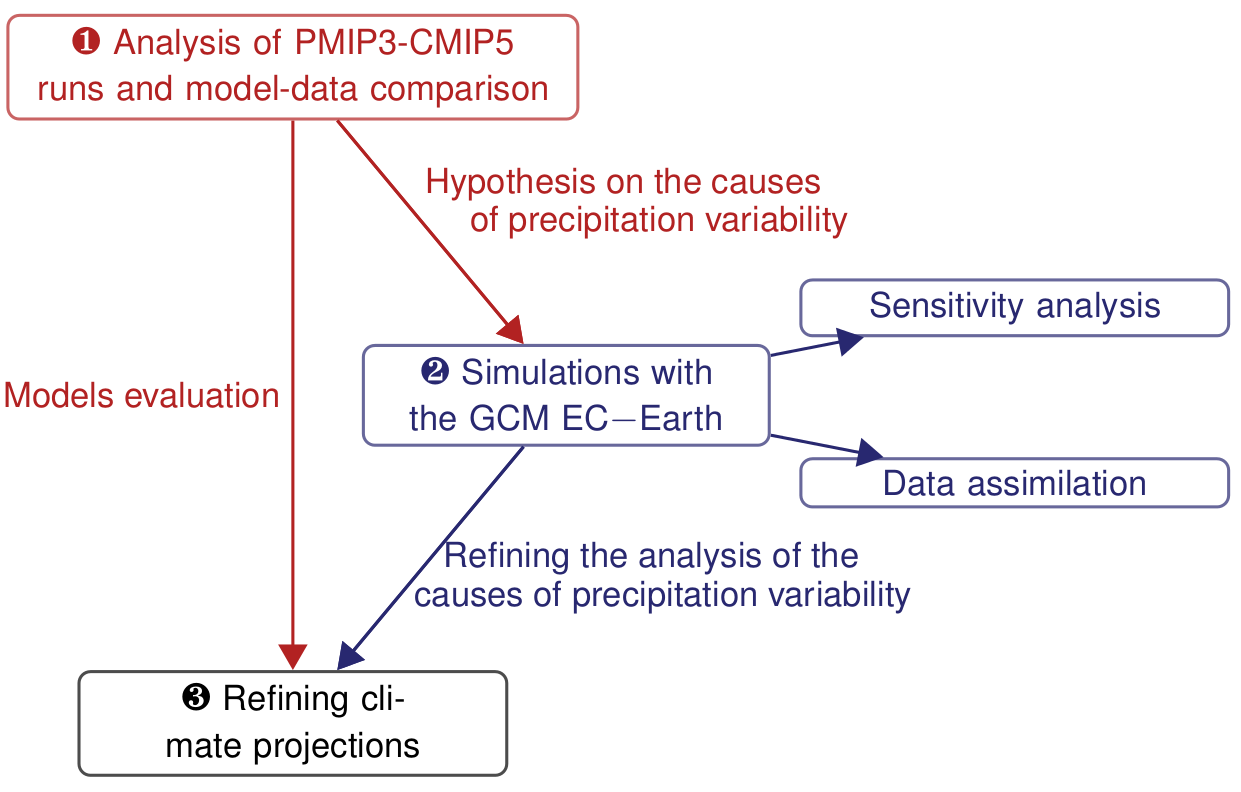East African precipitation variability
Project
Most of the East African’s agriculture depends on the amount and the seasonal occurrence of rainfall. This, with other factors such as rapid changes in land use associated to population growth, makes this region very sensitive to climate change. However, there is no consensus on the future climate change of this region, the drivers responsible for the East African precipitation variability being poorly understood. General circulation models (GCMs) generally predict a wetter climate over that region in the context of the global warming, but these projections contrast with the recent severe droughts that have impacted East Africa (2008-2009, 2010-2011).
The objective of this study is to improve the understanding of the mechanisms driving the variability of the East African climate at interannual to decadal time scales using the experiments performed in the framework of the PMIP3/CMIP5 projects. There are three main steps.

First, the hindcasting performance of climate models, i.e. their ability to replicate the temporal and spatial patterns of documented past climate variability over East Africa, is test as a guide to their relative ability to simulate future climate trends and variability under prescribed combinations of natural and anthropogenic climate forcing.
Second, new experiments are performed using the climate model EC-EARTH over specific period of the last millennium during which we know that contrasting climate conditions in East Africa occurred. Two different approaches are used to estimate the processes responsible for the episodes of extreme climatic conditions: data assimilation and sensitivity analyses.
Third, our analyses of the last millennium will be used to refine projections of future climate change in East Africa using the CMIP5 database.
Related communications and publications
Oral communications
Poster presentation
- Assessing the performance of climate models in East Africa over the last millennium - Young Researchers Overseas' Day (Brussels, Belgium, Dec. 2014).
- East African climate dynamics over the past millennium in PMIP3/CMIP5 simulations - Second general meeting PMIP3 (Namur, Belgium, May. 2014).
- East African climate dynamics over the past millennium in PMIP3/CMIP5 simulations - EGU General Assembly (Vienna, Austria, Apr. 2014).
Support
|
This study is part of the project PAMEXEA (Patterns and Mechanisms of Extreme weather in East Africa) funded by the Belgian Federal Science Policy Office (BELSPO). PAMEXEA aims at improving understanding of climate trends and extremes in East Africa, as a basis for appropriate management of land and water resources. |